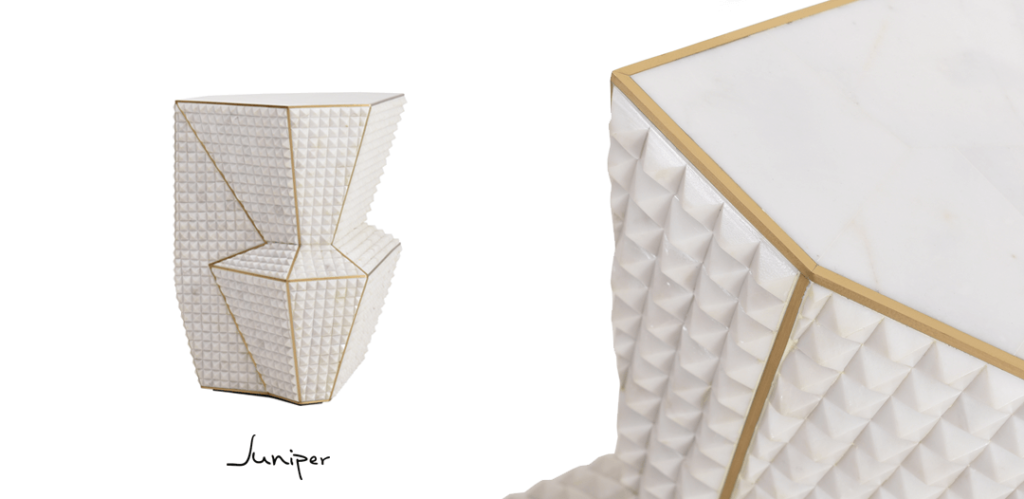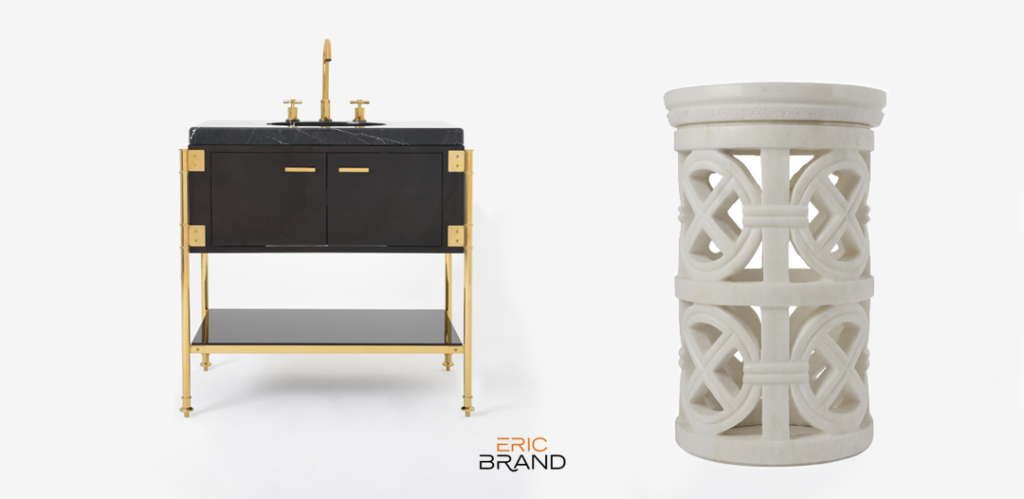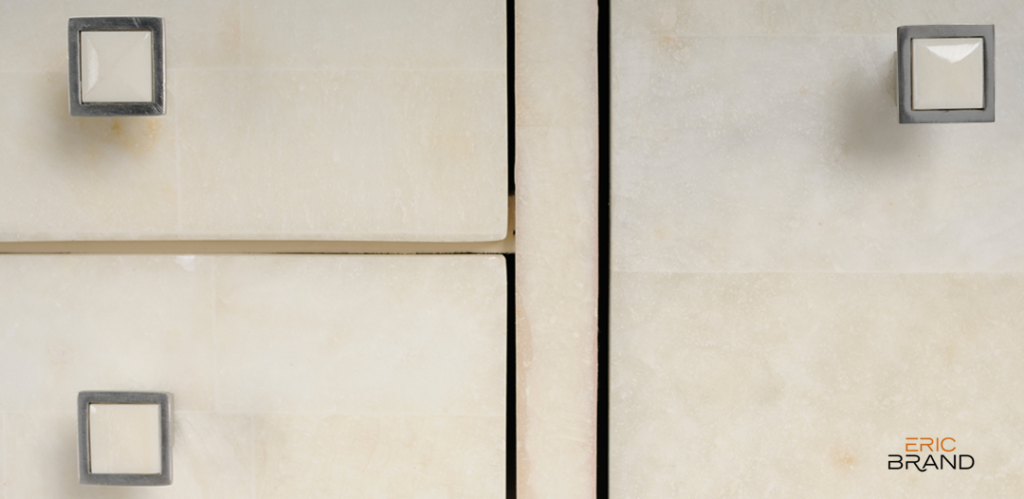SET IN STONE: DESIGN ENTERS A NEW STONE AGE
Most people think of using stone in their home decor outside, particularly fountains and statues in their garden. While it might not seem like an obvious choice, the use of stone furniture is becoming an increasingly popular trend for homes and hotels alike. When you think about it, it’s actually a wonderful idea: stone furniture is definitely a hassle-free option, providing both aesthetic form and practical function to any environment it inhabits. Ease of maintenance and less chances of getting damaged make stone a highly favorable material for creating furniture which you can place literally anywhere – in your garden, patio, or even inside your home. Don’t believe us? Check out the J45 Alabaster Table, for example. Just take one look at this crystal stone piece with its crazy cut pattern stone at top, side pyramidal shapes, and polished brass corner trims. It effortlessly livens up any space it inhabits, with its geometrically-unique, eye-catching style. Occasional table or work of modern art? We like to think it’s both!
To witness the creative versatility of stone furniture, one needs to look no further than the hospitality industry. The one-of-a-kind quality of this natural material makes it perfect for the custom furniture choices prevalent inside hotels. Custom manufacturers are using stones like marble, granite, travertine, quartz, and concrete to design showcase pieces that create beautiful-but-resilient sets crafted to the exact specifications of public spaces as well as guest rooms. The natural beauty of stone allows it to match any design style, from traditional luxury properties and modern boutiques to rustic mountain resorts.
Whether you choose to employ this surprisingly versatile material in a personal or professional setting, you’ll have plenty of options to choose from. The most common are:
Just take one look at this crystal stone piece with its crazy cut pattern stone at top, side pyramidal shapes, and polished brass corner trims. It effortlessly livens up any space it inhabits, with its geometrically-unique, eye-catching style. Occasional table or work of modern art? We like to think it’s both!
To witness the creative versatility of stone furniture, one needs to look no further than the hospitality industry. The one-of-a-kind quality of this natural material makes it perfect for the custom furniture choices prevalent inside hotels. Custom manufacturers are using stones like marble, granite, travertine, quartz, and concrete to design showcase pieces that create beautiful-but-resilient sets crafted to the exact specifications of public spaces as well as guest rooms. The natural beauty of stone allows it to match any design style, from traditional luxury properties and modern boutiques to rustic mountain resorts.
Whether you choose to employ this surprisingly versatile material in a personal or professional setting, you’ll have plenty of options to choose from. The most common are:

- Marble – Long synonymous with luxury and elegance, marble has shaped monuments and works of art since the beginning of recorded history. Although sealers can help, marble is porous and vulnerable to scratching and staining.
- Granite – The reigning king of the countertop industry until it was surpassed by quartz in 2014, granite boasts a unique speckled and glossy look that dresses up countless kitchens and bathrooms. It is strong and durable, especially when sealed properly.
- Quartzite – A naturally occurring stone composed of quartz sandstone, quartzite is similar to granite in strength and marble in coloring. Like those stones, it also needs annual sealing for best results. Mainly available in lighter colors, quartzite has recently become a more popular surface with the current trend in light countertops.
- Quartz – Quartz is an “engineered stone,” meaning it’s manufactured from chunks of stone mixed with resins and coloring. It is nearly impenetrable and its resistance to chips, scratches and stains quickly pushed it past granite as the most popular choice for countertops. Unlike other stone surfaces, Quartz does not require sealing.
- Concrete – No longer relegated to sidewalks and driveways, the use of concrete in countertops and some furniture has soared in recent years thanks to the appeal of its industrial-yet-rustic appearance and how easy it is to customize.
- Travertine – Another popular choice for countertops, flooring, walls, showers and furniture, but it can be marked by acidic liquids like vinegar or lemon juice.
- Porcelain – Porcelain is created by mixing clay with materials such as glass, feldspar, or granite. Once it’s been fired and glazed, porcelain is a strong material with a low absorption rate, meaning it’s very resistant to heavy foot traffic, water, and bacteria.

- Polished – producing a high gloss, mirror-like surface.
- Honed – produces a smooth-yet-not-glossy finish.
- Flamed – resulting in deeply textured surface ideal for external surfaces.
- Sandblasted – creates a finely textured surface ideal for use in traffic-ways.
- Brushed or Leathered – creates an illusion of natural wear and results in gently embossed, medieval look of the stone.